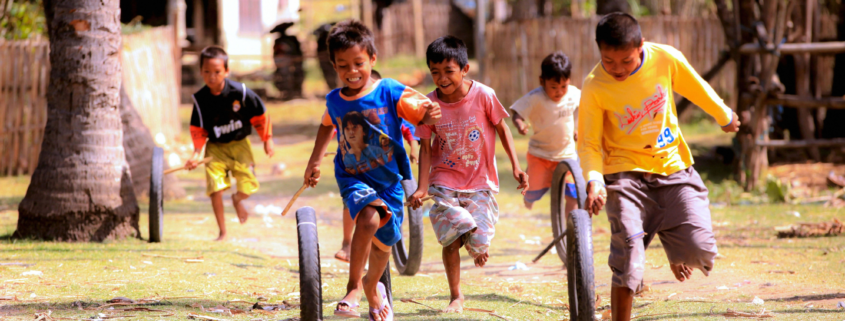There is a better way – Part 5: There’s more to athlete preparation than ‘strength & conditioning’
Physical preparation in athlete preparation is over-rated.
Its obvious that few share my belief, considering the amount of focus and effort going into physical development globally. I learnt from my professional experience in North America in the late 1980’s and early 1990s that their culture placed a (potentially excessive) premium on physical development. That cultural value is now global, courtesy of the internet.
The model I ascribe to – and teach – for athlete development states there are four (4) components – technical (skill), tactical (tactics), psychological and physical. After based on my four decades of professional experience, I have concluded that (generally speaking) physical development is the least important of them all.
Only in junior sport will a physical advantage at the expense of the development of the other three athlete preparation qualities provide a superior, temporary sport performance advantage. And the athlete in their long-term success, which will be reduced for doing so, pays the price for this.
Now saying ‘physical development is over-rated’ is a tough thing for me to say, especially as doing just that – physical development – has put food on my table for the bulk of my adult life. However I came into this profession to help athletes be successful in sport, not to help them become physical successful per se.
Put simply athletes are spending too much time in the gym and not enough time in skill (technical) and tactical (tactics) development.
Now to make things worse…
The model I ascribe to (and teach) for physical development states there are four (4) components – flexibility, strength, speed and endurance. After based on my four decades of professional experience, I have concluded that (generally speaking) strength is NOT the most important of them all.
But you would not know that, because an increasing percent of physical training time globally in sport is being dedicated to strength development.
So how did we get to this point? In the 1960s strength training in sports was virtually non-existent. In the 1970s it began to raise its head in sport, especially in strength sports such as US college (American) football (gridiron).
One of the leading western world physical preparation professional bodies, the National Strength Coaches Association (NSCA), grew out of this growing movement – football strength coaches at US colleges.
A study of history shows the limits of this association. Strength training was missing, and that is what the NSCA provided. By the time they realized they have overlooked other physical qualities, all they could do was substitute the word ‘conditioning’ for the word ‘coach’, and have to change the acronym NSCA. To this day, their content is reflective of the origin – a heavy bias towards strength training with very little focus on the other physical qualities .
By the 1980s, whilst not as popular as fitness training in the broader society, strength training was being sought out by a growing number of sports (which I where I got my start in sport).
During the 1990s strength training gained acceptance globally – both in sport and the general population.
By now the void had been filled. Strength training was no longer deficient. However in true human ‘over-reaction’ style, we just kept going. In the post 2000 period too much emphasis is being placed on strength.
Now, to drill deeper, not only are we seeing an over-emphasis on strength training, the strength training being conduced is significantly flawed. More on this another day….
So what gave way to allow the extra time for strength training? Playing the sport (skill development), and flexibility training – which ironically (for myself and the values I teach) are THE MOST important athletic and physical qualities respectively….
I was introduced to stretching in high school sport. Half a century later, at the same school, I would be now exposed to less stretching.
Half a century ago I engaged in a sporadic self-driven participation in the strength training gym. It wasn’t organized, and few attended.
Now, at the same school, the strength program is compulsory for all athletes in all sports. If a student athlete does not attend the strength training program for that team, the young athlete is denied selection.
At high school half a century ago my spare time was used up playing kids-organized pick up games. Now, I would not have time to engage in this unstructured, skill-based training. I would instead be at the gym meeting and exceeding the new expectations that athleticism is more effectively developed in the weight room.
So I am not speaking hypothetically. I am speaking as I see it, including a very personal case study using the same high school half a century apart.
So we have potentially given up the two most important qualities of athletic and physical preparation for one quality that is not the most important….
How is that serving us athletically or health wise?
Is this situation likely to reverse? Not in the foreseeable future. Not whilst the trend is towards every high school in the western world having their own full-time ‘strength & conditioning’ coach. Not while the dominant belief is that all there is to athlete preparation is ‘strength & conditioning’.
Hopefully, one day….the world will realize again – that this is more to athlete preparation than ‘strength & conditioning’….
Note:
For those athletes and coaches who are concerned about the direction of training and want to believe there is a better way – congratulations. There is a better way. We have spend the last four decades discovering better ways to train, and we teach these better ways when we work with athletes or coaches. The KSI Coaching Program aims to provide you with the tools to train athletes and others in their highest and best interests, with no interest in what the dominant trend is or will be in the future. Learn more about KSI Coach Education here https://kingsports.net/courses/



